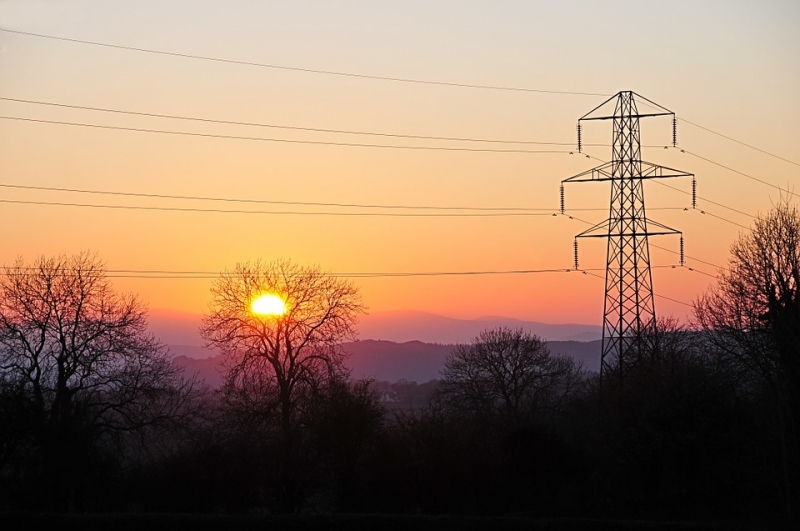Would the formation of a regional power market in the western United States be a step forward into a more sustainable future or a stumble backward into continued use of fossil fuels for the region? Much of the debate concerns how a regional power market would increase or reduce greenhouse gas (GHG) emissions. Advocates of the regional power market argue that with increased use of renewable energy and its more efficient integration and transfer, carbon emissions would decrease. In contrast, proponents against the new framework maintain that less state control over their energy grids could result in less support for renewable energy and an increased use of coal. The formation of this market could lead to a cleaner, greener future or it could incentivize continued use of fossil fuels within some of the western states.
Throughout most of the United States, the electric grids use regional transmission operators, which manage electrical transmission within each region. This system streamlines the grid’s coordination and generation of energy. However, the western grid (which includes 14 states as well as areas of Canada and Mexico) does not have such a system in place. In fact, there are more than 38 “balancing authorities” in the West that govern energy management within independent jurisdictions. The energy stability and sustainability concerns regarding the fragmentation of the western energy grid have led to ever-increasing conversation and debate about the unification of the western grid.
 There are significant potential advantages to a western regional grid. Currently, the fragmented grid has resulted in billions of dollars of unnecessary costs annually, coming from increased GHG emissions, decreased power reliability, and higher costs placed on utility customers. The proposed regional plan would balance these factors by exporting clean energy, improving power plant dispatch, and overall streamlining of the grid.
There are significant potential advantages to a western regional grid. Currently, the fragmented grid has resulted in billions of dollars of unnecessary costs annually, coming from increased GHG emissions, decreased power reliability, and higher costs placed on utility customers. The proposed regional plan would balance these factors by exporting clean energy, improving power plant dispatch, and overall streamlining of the grid.
By expanding the market for clean energy, the western grid can more efficiently distribute the resource among the western states. California currently produces more energy from solar sources than it can efficiently use, and by integrating into a western regional power grid, the state’s solar energy could be allocated to other states. As the cost of renewable energy falls below conventional fossil fuels, the allocation could lead to millions of dollars in savings for users in all concerned states. In a similar fashion, overproduction of wind energy from states such as Wyoming and Colorado could be efficiently distributed among many western states under the proposed grid.
The advantages of a regional western electricity grid stem beyond just energy efficiency: advocates of the legislation argue that increased demand for renewable energy would lead to more construction and maintenance jobs within these states. In addition, reduced electricity prices, which would come from increased use of renewables and greater grid efficiency, would lead to higher household electric bill savings.
Though the advantages of this expanded market are impressive, there are also numerous concerns. The regionalization plan creates opportunity for cleaner and cheaper energy, but it also may put at stake state autonomy over energy management. One concern involves the risk of trade manipulation. A western regional power market would leave states unable to respond to such manipulation in state court (as has been done in the past), and can prioritize corporate interests within the regional transmission system. A regionalization plan also neglects the differences in state readiness and willingness to adopt renewable energy and work toward clean energy. While California and many other western states are excited about the current conditions and future possibility of renewable energy, there are also many states (such as coal-rich Utah) that believe fossil fuels are an important function of a reliable grid. With increased pressure by the current administration to turn to the use of cheap coal, a regionalization plan could allow a greater opportunity for a continuation of coal energy production alongside or instead of renewables.
The formation of a regional power market in the western United States is a complicated, controversial, and timely topic. Even with an overview of the basics, many questions remain: who would be tasked with overseeing, governing, and regulating the western regional power market? How will price competition operate? Will this lead to a greener region in the future or capitulate the sustainable progress made by individual states? The Environmental Law Institute and leading experts in the field will be exploring these questions and more in an upcoming event Western Grid Regionalization Issues on July 24 from 5:30 pm to 7 pm at Farella Braun + Martell LLP in San Francisco, California.
This event is open and free to the public, but please register. Event details and RSVP information can be found here.
